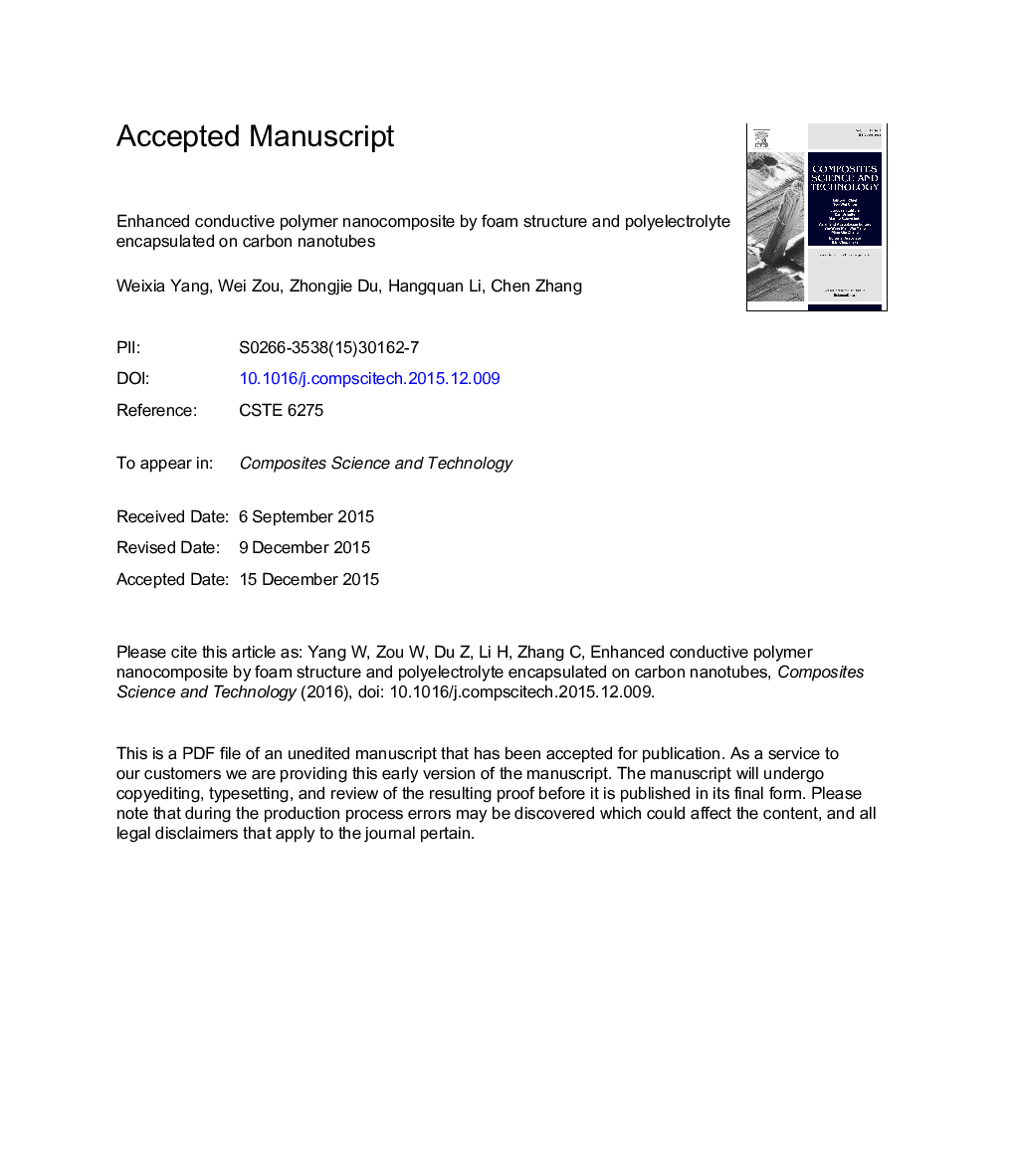| Article ID | Journal | Published Year | Pages | File Type |
|---|---|---|---|---|
| 7215176 | Composites Science and Technology | 2016 | 24 Pages |
Abstract
Improved conductive polystyrene (PS)-based nanocomposite filled with ultralow addition of multi-walled carbon nanotubes (MWCNTs) were fabricated by concentrated emulsion polymerization. First, the foam structure was constructed to compress MWCNTs into a thin polymer skeleton and enhance the electrical conductivity of the nanocomposite. Second, a polyelectrolyte poly (3,4-ethylene dioxythiophene):poly(styrene sulfonate) (PEDOT:PSS) was introduced onto MWCNTs to reduce the noncontact resistivity within the inter-tube junctions. The effect of porous morphology, the loading phase and content of MWCNTs, and the synergetic effect of MWCNTs and PEDOT:PSS on the electrical conductivity of the nanocomposites were investigated. It was found that the foam structure of nanocomposite with a specific location of conductive fillers can strongly reduce the percolation threshold. In addition, the conductivities of the nanocomposites could be controlled by the porous structure. As a result, the percolation threshold of 0.3Â wt% PEDOT:PSS/MWCNTs to PS matrix was achieved, and the highest conductivity was obtained from the foam structure with the thinnest pore wall and the appropriate ratio of PEDOT:PSS/MWCNTs.
Related Topics
Physical Sciences and Engineering
Engineering
Engineering (General)
Authors
Weixia Yang, Wei Zou, Zhongjie Du, Hangquan Li, Chen Zhang,
